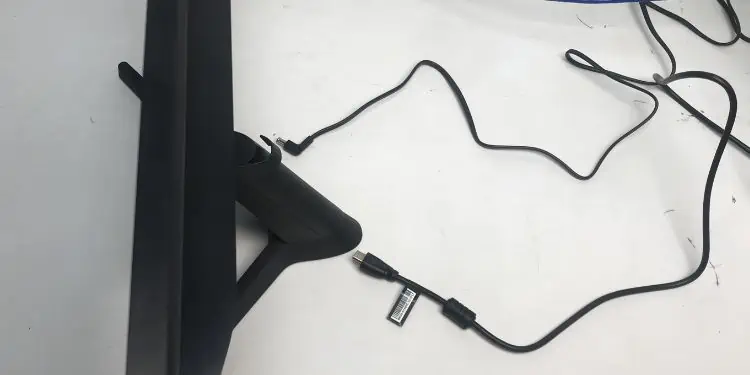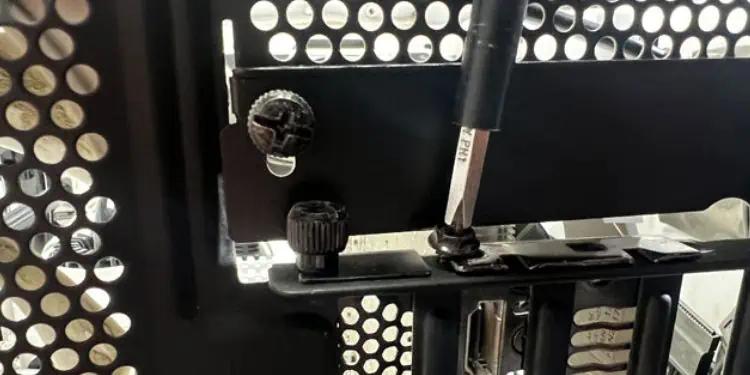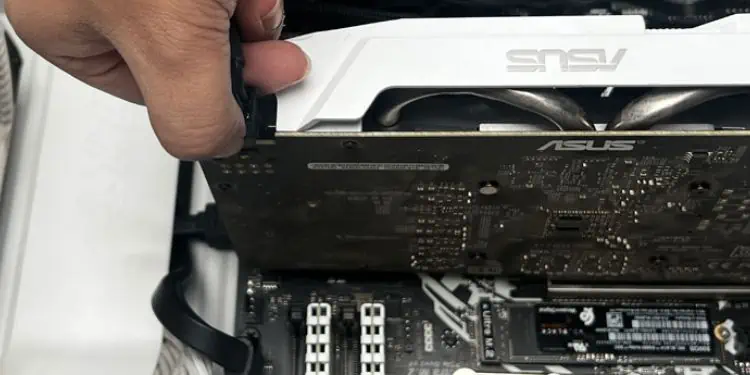Issues with data or power connections may prevent your monitor from turning on. Most users claim to have faced this problem when their system goes to standby orsleep mode but doesn’t wake up. Also, this can happen when the operating system can’t boot up or there are problems within the internal hardware components.
If you do not notice any light on the monitor’s LED, note that there’s a problem with your power port or the cable. In other cases, the LED emits light but you’re stuck with ablack screen. This indicates issues with the data port or cable.
Before moving forward, we first recommendforcerestarting your computerandreconnecting all the cables. Also, you may tryresetting the graphics driver(using Windows + Ctrl + Shift + B keys) to resolve possible display issues.

Inspect Cables, Ports, and Wall Outlets
First and foremost, you need to ensure that none of the cables and ports are damaged. In some cases, the wall outlet may have been damaged. So, you may tryconnecting the power adapter to another outlet.
Next, inspect both the power and data (HDMI, DisplayPort, VGA) cables, ensuring they aren’t broken. Kindly replace the cable if found damaged. You may even try another data cable if your monitor supports the interface.
While you’re at this, don’t forget to check the power and data ports. If you find any issues with the power port, kindly check the warranty and take it to the nearest repair center to get it fixed. For damaged data ports, you may simplyplug the cable into an alternative oneor use a different interface.

Power cycling will recover your monitor from its unresponsive state, fixing the basic problems by reinitializing the configuration parameters. Below is a simple guide on how you may do just that:
Examine Error Messages on the Screen
If the monitor isn’t completely black and instead throws some errors, you may directly follow the screen instructions.
Some manufacturers have adopted blink codes tonotify users of the possible causewhen the monitor doesn’t turn on. These codes can be identified by noting the blinking pattern of your monitor’s LED or dedicated keys on the keyboard.

For example,HP’s Caps Lock key starts to blink(long blinks followed by short ones) with distinct patterns indicating different issues. Therefore, if you also notice similar blinking sequences, you may refer to your manufacturer’s official website to learn the root cause and their possible solutions.
Check Issue in Another Monitor
If none of the above fixes helped, the problem might lie within your monitor’s internal components. In this case, the only option is to repair or replace the output device.
Well, you may check this by connecting another monitor to your system. If the other display turns on without any issues, it’s an indication that your monitor is malfunctioning. However, if the second display also doesn’t turn on, know that there are issues with other hardware components.
